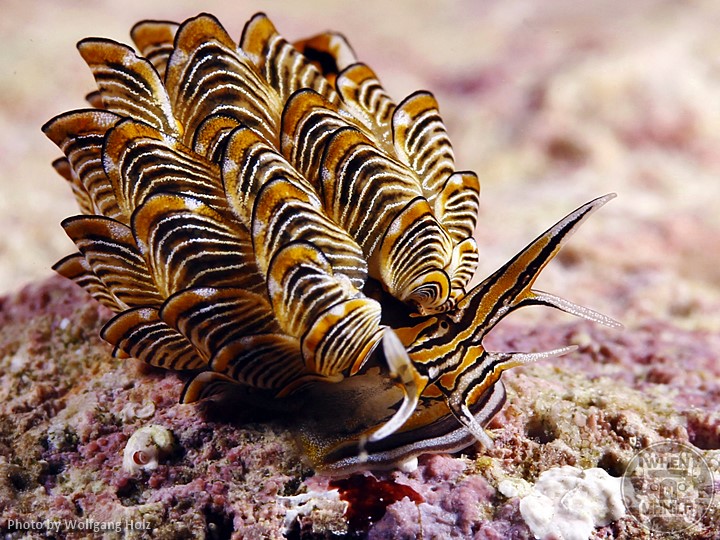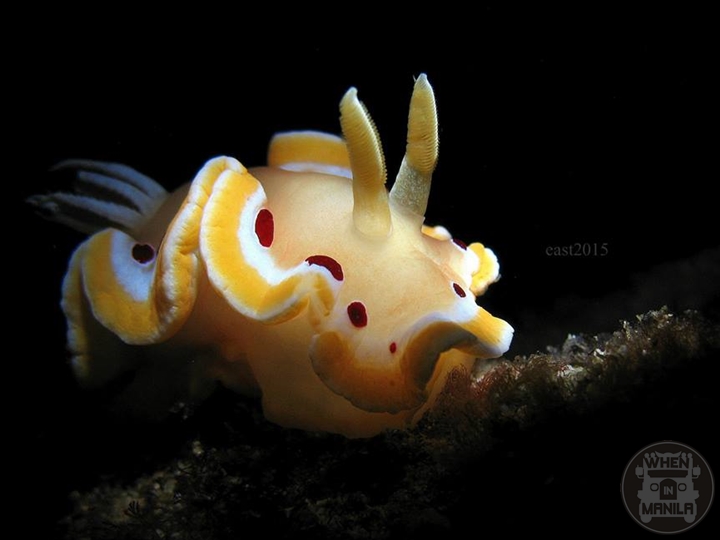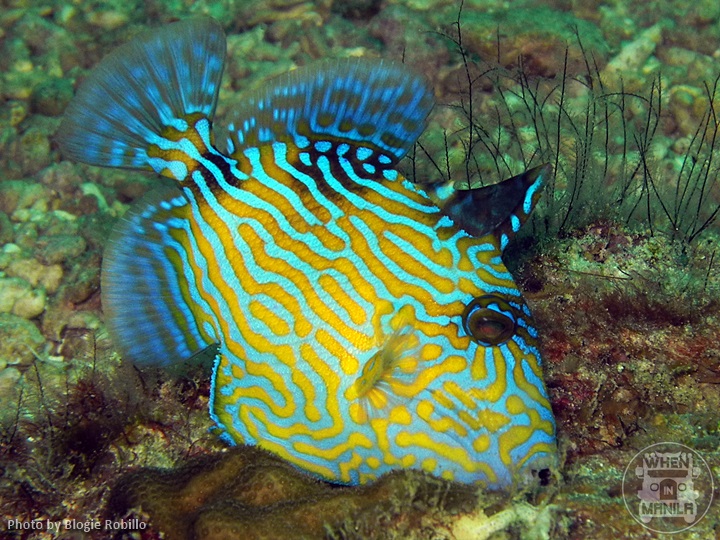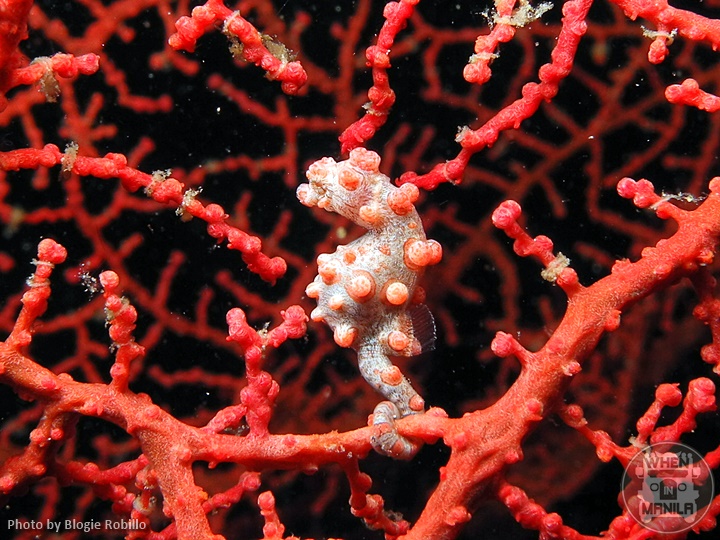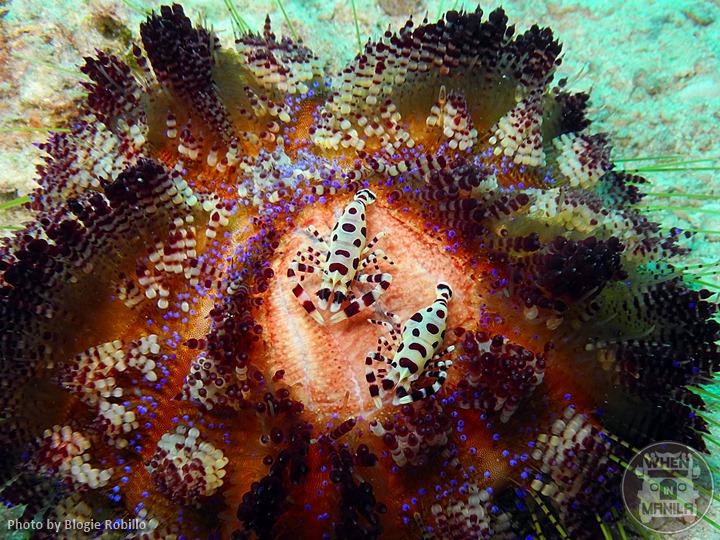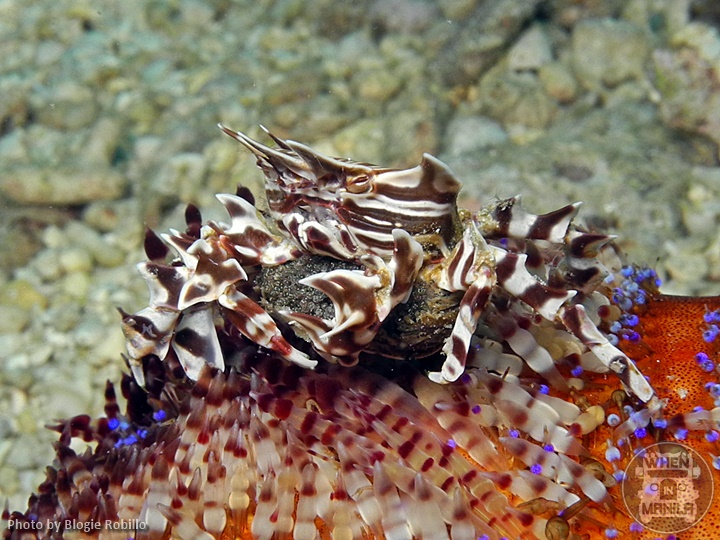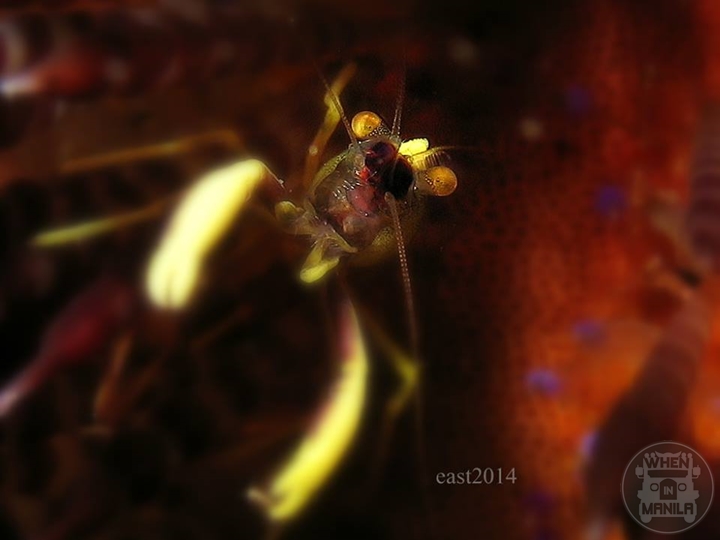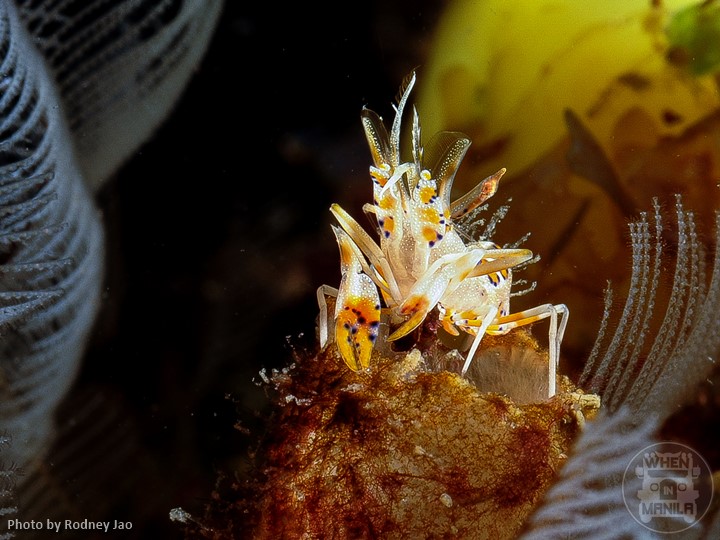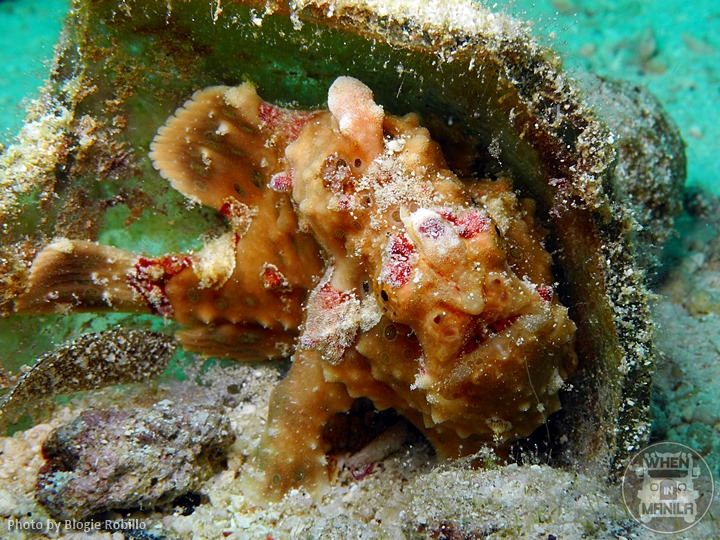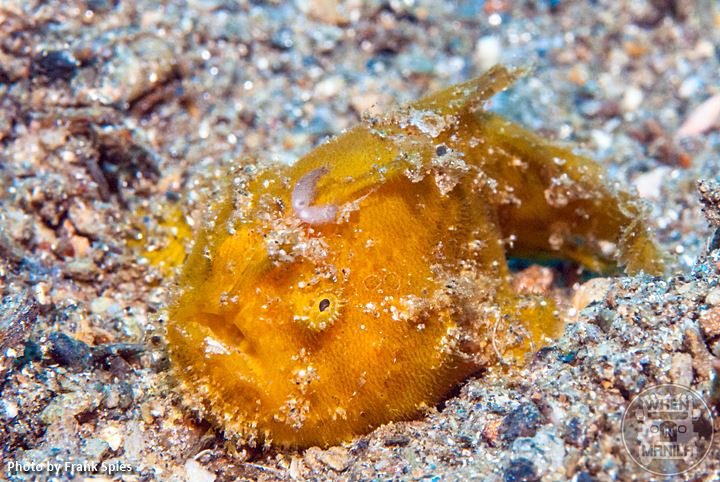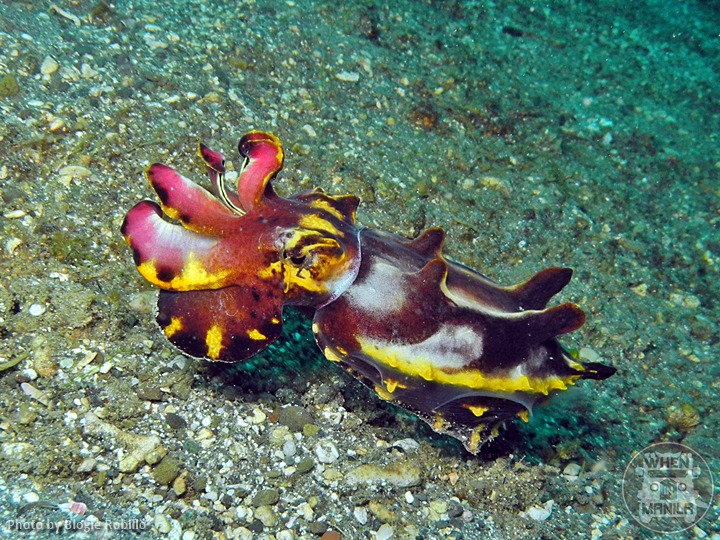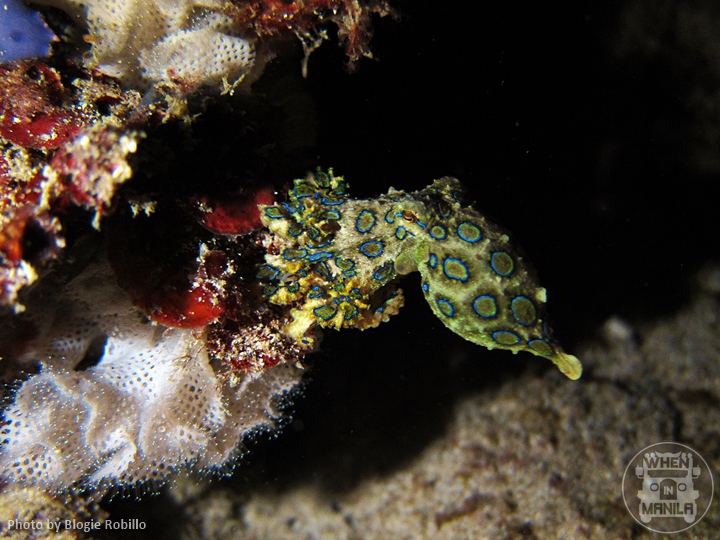Underwater Photos: Critters of Philippine Seas
Being a scuba diver—and struggling u/w photographer—I get to observe loads of amazing aquatic life forms in their natural element. Here’s just a sampling of marine creatures that call Philippine seas their watery world. How many of them have you encountered?
Critters of Philippine Seas
Nudibranchs
Nudibranchs are sea slugs that have evolved into a myriad indescribable forms and features. Some ‘nudis’ are as big as nearly a meter long (as far as I’ve seen), and others as minuscule as a few millimeters! Most have antenna-like feelers (called rhinophores), and there are those that have fascinating and spectacular protuberances on their bodies. Nudibranchs, in all their enchanting hues and shapes, are Mother Nature’s crazy canvas of creation.
Out of this world!
▲ It’s like nothing you’ve imagined, is it? This is the black sapsucking slug (Cyerce nigra) — not a very inspired name, I know, but it’s an uncommon beauty nonetheless! The photo above was taken by Wolfgang Holz, a German underwater photographer who loves diving Romblon’s islands. I must say, that place is proving to be a critter paradise!
Its name comes from the Latin cruentus, “stained with blood”
▲ Also a rare find, I call this the blood-stained nudibranch (Ardeadoris cruenta), and it’s only the second time I’ve spotted this since 2012. (Photo courtesy of dive instructor East Pardillo.) Nudibranchs like this can be lovely to look at, but aren’t as delicate as you might think. They’re in the same taxonomic class as snails (Mollusca), but sans shells: they have an ingenious defense mechanism instead. When ingesting poisonous prey (e.g., hydroids, sea anemones), they incorporate the toxins into their bodies for use against potential predators.
Blue Triggerfish
Erect dorsal fin means it’s in alert mode
The blue triggerfish (Pseudobalistes fuscus) is a delight to watch while scuba diving, owing to its bright, maze-like body markings. As with other species of the triggerfish family, it’s very territorial — this one was aggressively circling its domain while I was in it. In the photo, this juvenile seems to be feeding on something… or posturing defensively? Triggerfish are named for that retractable anterior dorsal fin they have. They extend it when alarmed, or to wedge themselves in a crevice for protection.
Pygmy Seahorse
Isn’t he the cutest thing?
When I got started with critters, this was the first that captured my attention. The photo above is edited (but of course), and that’s why you can clearly make out the adorable little pygmy seahorse (Hippocampus bargibanti) perched on a coral branch. With the naked eye, however, you’d be hard-pressed to see through his excellent camouflage.
Pygmy seahorses (max. height: 2cm) inhabit the gorgonian sea fan (Muricella plectana & M. paraplectana), mimicking the coral’s bulbous polyps. They’re so thoroughly disguised they were discovered serendipitously as a sea fan was being studied in a lab! Today, though, their camo isn’t much use against divers’ underwater cameras & torchlights.
Three in One!
A particularly nasty pain-peddler out there is the fire urchin (Asthenosoma varium), whose toxic sting delivers an intense burning sensation that can last for hours. And yet, there are three known critters that live symbiotically with this venomous echinoderm.
A pair of colemans getting comfy
▲ First is the most popular among u/w photographers: the coleman shrimp (Periclimenes colemani). You’ll often see them in pairs, and they’ll clear out a swath of the urchin’s spines and call it home. The host isn’t harmed by this, though. (I do wonder sometimes how these shrimp shop for real estate that’s always on the move…)
Grumpy looking crab. (Try squatting on a sea urchin!)
▲ One of the most striking crustaceans I’ve come across is the zebra urchin crab (Zebrida adamsii). Its name is plainly descriptive: striped body; lives on sea urchin. Personally, I would’ve named it samurai crab. Like their neighbors, these commensal crab also come in pairs. The one in the photo is nursing eggs that are about to hatch (and its mate was cropped out of the picture).
Skittish crustacean
While the zebra crab is content with the furnishings and the coleman shrimp will always redecorate,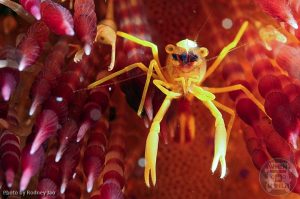
Although, in spite of the bokeh effect—or because of it—my friend East was rather able to take an artistic shot (above), in my opinion. The picture on the left was taken by my dive buddy, Rodney Jao, at Talikud Island, Samal.
Tiger Shrimp
King of the Hill
This bristly critter is one elusive crustacean that camera-toting divers are ever eager to glimpse. 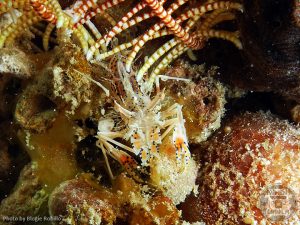
Not a lot is known about the tiger shrimp, but we’ve observed that they hunt in pairs, and their diet consists of brittle stars and sometimes also tiny starfish. Photo above is by Rodney Jao (both photos were taken at Talikud Island).
Frogfish
Frogfish have a huge following among divers. They have a rather intriguing—ok, fugly—appearance, but people who look for them simply can’t get enough of them. They’re also called “anglerfish” because of the way they feed: they lure crustaceans or other fish into their cavernous, suction-powered jaws by wriggling a rod and ‘bait’ attached to their heads. A fishing fish!
A face only a mother could love
▲ This guy is a warty frogfish (Antennarius maculatus), a.k.a clown frogfish. Frogfish are known to use camouflage, too. It’s likely they change colors to match their surroundings. For example, I’ve seen this species in darker brown, yellow & pink, and black & red.
Adorable little ‘tadpole’
This charmer is a juvenile hairy frogfish (Antennarius striatus), photographed for posterity by Frank Spies. 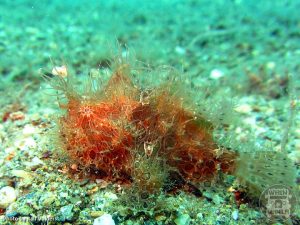
There are plenty of species out there, and it’s often tricky telling them apart. On a Facebook group I co-manage with Kati, members post photos for critter identification by the community, and when it comes to these froggies—er—fishies, you can bet lively exchanges can break out.
Flamboyant Cuttlefish
This critter certainly lives up to its name!
I’m sure you’ll agree that this bottom dweller is aptly named: flamboyant cuttlefish (Metasepia pfefferi). Too bad, 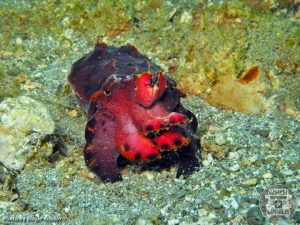
Compared to other cuttlefish species, the flamboyant is much smaller — only 6-8cm long (excluding its two tentacles, which can extend to about twice the length of its body). But it’s no pushover. When threatened, unlike its bigger cousins, it will stand its ground and bristle. It has no known predators, and that’s probably because its flesh is poisonous.
Another unique trait: it prefers to “walk” rather than swim. It doesn’t have legs, but a couple of stumps protrude beneath its posterior and it uses them, along with its arms, to strut its stuff on the sea floor.
Blue-ringed Octopus
This “bro” is tiny but packs a punch!
Divers call him “BRO” (but known otherwise as Hapalochlaena lunulata). Most people are aware that octopuses are curators of camouflage. The blue-ringed octopus, however, doesn’t bother with that tired technique; it doesn’t even use ink at all. Instead, it flares those rings an angry, iridescent blue. 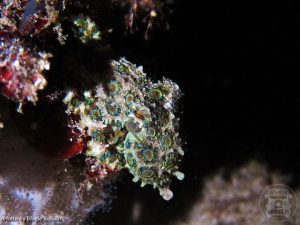
To date, there are four recorded—or, as taxonomists put it, “described”—species of BROs. But there’s at least another one gallivanting in our waters, undescribed and unperturbed by all the enthrallment surrounding it. I’ve seen one that has much tighter rings than those on H. lunulata, but just as feisty! Speaking of which, when I was doing my best to take pictures of him on a night dive, this spirited little fellow in the photos kept hurling himself against the light of my underwater torch! Never heard of such behavior among BROs… Was I glad it didn’t think of assaulting me in the face!
Notice I’ve indicated all the critters’ Latin names? That’s to make certain of their globally-recognized identities. If you’re into marine critters like me, join us on Facebook: look for the group called ID Please! (Marine Creature Identification). That’s it for now. Thanks for reading!


